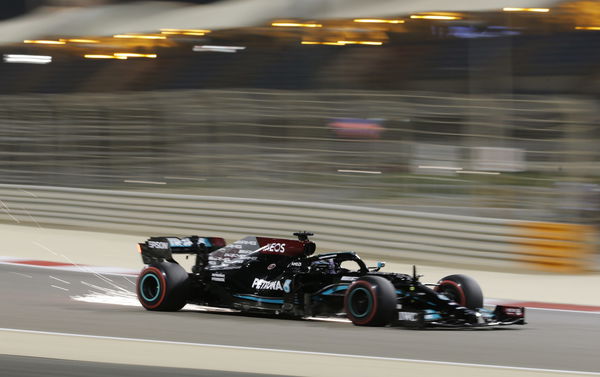
via Reuters
Formula One F1 – Bahrain Grand Prix – Bahrain International Circuit, Sakhir, Bahrain – March 27, 2021 Mercedes’ Lewis Hamilton in action during qualifying REUTERS/Hamad I Mohammed

via Reuters
Formula One F1 – Bahrain Grand Prix – Bahrain International Circuit, Sakhir, Bahrain – March 27, 2021 Mercedes’ Lewis Hamilton in action during qualifying REUTERS/Hamad I Mohammed
In motor racing, particularly in Formula One, two common terms thrown around are ‘oversteer’ and ‘understeer.’ For this kind of situation, the cars often lose grip on the tarmac, though the locations and the conditions may vary. To be precise, either the rear end of the car loses grip, or the front end does.
In simple terms, when a car is turning in, if the front end turns and rear goes straight due to no grip, it is called oversteer. This generally forces the car to snap sideways and the driver has to correct the car. On the other end of the spectrum, if the rear end of the car turns, but the front end goes straight due to a lack of grip, it is known as understeer.
Admittedly, many drivers in F1 tailor their driving styles to suit the oversteer or understeer. Some, like Kimi Raikkonen, prefer a car that has front-end grip, which generates oversteer. Meanwhile, a driver of Fernando Alonso’s caliber prefers to drive cars that can be essentially thrown into the corners via understeer.
ADVERTISEMENT
Article continues below this ad
Is the Formula One oversteer-understeer similar to motorbike racing’s high side and low side?
Fundamentally speaking, the concepts are hugely similar since they all involve tire grip. In different terminology, a high side takes place when the bike loses rear grip. Since F1 cars are on four wheels, there is more stability and a chance for a driver to save the car. Bike racers do not have that luxury as this could cause them to fall off.
ADVERTISEMENT
Article continues below this ad

via Reuters
Formula One F1 – Pre-Season Testing – Bahrain International Circuit, Sakhir, Bahrain – March 12, 2021 Haas’ Nikita Mazepin in action during testing REUTERS/Hamad I Mohammed
However, low sides are relatively harmless, and riders can get back on the bike to continue. All this depends on the speed of the low side and whether the bike is undamaged. On the other end of the spectrum, high sides are far more devastating.
In essence, a high side literally throws a rider into the air. Needless to say, the trip to the ground is very painful and there is a risk of a rider injuring themselves. In addition to that, there is also a chance that the bike will be very badly damaged.
ADVERTISEMENT
Article continues below this ad
At the end of the day, F1 drivers can save the cars from crashing. So, oversteer and understeer are usually not a problem for them.
READ MORE: WATCH: The Bizarre Driving Trick That Helped Fernando Alonso Win Championships in F1
ADVERTISEMENT
ADVERTISEMENT
ADVERTISEMENT
ADVERTISEMENT

